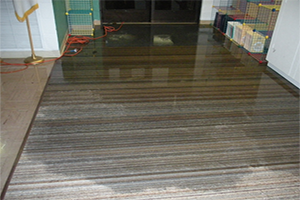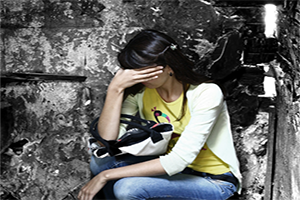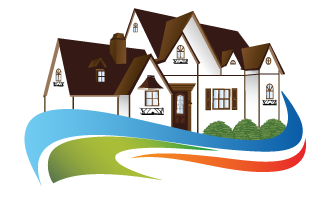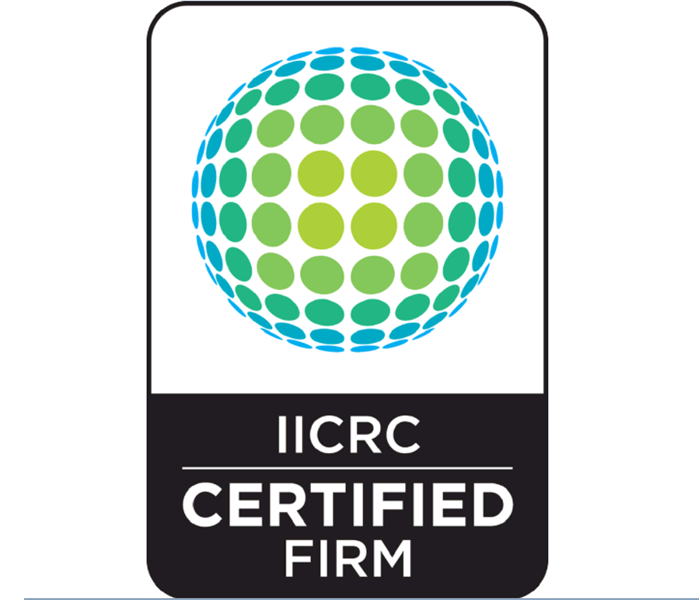FAQs – Water Damage
Statistics & Information
- A house loses about 15% of the water it receives through undetected leaks.
- Running toilets waste between 200-500 gallons per day.
- Water leaking at 1 drip per second wastes 3,000 gallons per day.
- Water wicks up the wall at a rate of 1 inch per hour.
- Mold can grow within 48-72 hours.
A. A number of factors determine drying time including location, size of affected area, types of building materials, weather conditions and how quickly remediation services begin. Each situation is unique, however, most property takes approximately 3-5 days to dry.
-

Q. How do I know when my property is completely dry?
A. Our specialized equipment can accurately determine whether your items have been thoroughly dry.Q. How much will it cost to run the drying equipment?
A. Based on today’s electrical rates, costs average about a dollar per day to operate the drying equipment.Q. How much does it cost to repair water damage?
A. Every water damage restoration project is individually priced to meet each customer’s specific needs. Above & Beyond Restoration and/or Above & Beyond Construction only charges you for the work we perform, not a standard flat rate.Q. Is water / flood damage covered by my insurance?
A. Most insurance policies cover the cost of water damage mitigation. Carefully review your policy and contact your insurance agent to determine your coverage levels.
Q. Can I restore the damage myself?
A. The use of non-commercial equipment will not properly extract water from the affected areas and materials. It is important to properly dry water-damaged areas within 24-48 hours in order to prevent mold growth.
Q. Do I need to move out of my home during the remediation process?
A. Air movers and dehumidifiers create some noise. It is important that the equipment remains on, so if you find the noise to be disruptive, you might want to consider another place to stay.
Q. Can I walk on the affected area during the remediation process?
A. We recommend keeping foot traffic to a minimum. Wearing shoes is recommended for safety reasons.
Q. Can my carpet and pad be salvaged after being exposed to water / flood damage?
A. As an experienced restoration contractor, Above & Beyond Restoration and/or Above & Beyond Construction can determine if your carpet and pad can be salvaged.
Q. My hardwood floors are wet and buckled. Will they need to be removed and replaced?
A. We use a specialized drying system which enables wood floors to dry efficiently. Because of hardwood’s density, the drying process can take three weeks or more. Your insurance company can work with you to determine whether floors will need to be refinished or replaced.
Q. What about sewage contamination?
A. Most hard surfaces can be cleaned and sanitized. Porous materials affected such as drywall, insulation, particle-board, and paneling should be removed and disposed of.
Q. How can I minimize the possibility of mold growth?
A. Quick, appropriate drying techniques are the key to reducing microbial growth to help ensure the health of your family or employees.
Q. Why should I use an IICRC- Restoration Company?
A. The Institute of Inspection Cleaning and Restoration (IICRC) developed the standards for water damage mitigation. Certification assures that trained, experienced technicians are on the job site. Certified companies, such as Above & Beyond Restoration and/or Above & Beyond Construction, know how to provide restoration services that protect your property and your family’s health.
FAQs – Mold Removal/Remediation
A. Yes, Above & Beyond Restoration and/or Above & Beyond Construction is certified through the Institute of Inspection For Cleaning and Restoration (IICRC).
A. Mold remediation is the process of removal and/or clean up of mold from an indoor environment, such as a home or a business. If a home or a business has serious mold damage, it is best to hire mold remediation/removal professionals as specialized equipment and methods may be required to remove the mold completely. Please call us at the number on the top of the page for mold remediation and removal services, 24 hours a day, 7 days a week.
-
 Q. What makes mold grow?
Q. What makes mold grow?
A. Mold enters your home as tiny spores. The spores need moisture to begin growing, digesting, and destroying. Molds can grow on almost any surface, including,- Ceiling tiles
- Wallpaper
- Paints
- Carpet
- Sheet rock
- Insulation
The mold grows best when there is lots of moisture from a leaky roof, high humidity or flood. There is no way to get rid of all molds and mold spores from your home. But you can control mold growth by keeping your home dry.
Q. How does mold grow?
A. Mold requires nutrients, water, oxygen and favorable temperatures to grow. Nutrients for mold are present in dead organic material such as wood, paper or fabrics; mold can also derive nutrients from some synthetic products such as paints and adhesives. Mold requires moisture, although some mold species can obtain that moisture from moist air when the relative humidity is above 70 percent.
Many molds thrive at normal indoor temperatures; few if any molds are able to grow below 40 F or above 100 F. Outside this range, molds may remain dormant or inactive; they may begin to grow again when the temperature is more favorable. Temperatures well above 100 F will kill mold and mold spores, but the exact temperature required to kill specific species is not well established.
Q. How long does the mold removal process take?
A. The time it takes for the mold removal process depends on many factors such as how much mold is present, where the mold is growing (behind walls, etc.), and the materials it grows on. Most mold removal (remediation) takes anywhere from 1 day to 5 days.
Q. How do I know when professional mold removal is complete?
A. There are two different ways to know when mold is removed.
Visual: You might see that all mold is gone is away, but hidden mold colonies and mold spores can linger in hidden places and in the air. So visual inspection is not the best way to insure complete removal.
Third party testing is usually the best way to test for complete mold removal verification.
Please also beware that there are different kinds of testers ranging from home inspectors to industrial hygienists. Please ask your independent tester if their tests, in writing, will stand up in court.
Remember that you need to have a pre testing procedure (mold spore tests, etc.), protocols (a list of how to remove the mold) and a clearance test after the mold removal to ensure that the mold spore count is at acceptable levels.
Q. Do I need to hire a mold remediation/removal expert to remove mold, or can I do it myself?
A. Actually anyone can remove mold from a home or a business as long as they understand that when you disturb mold (clean it, cut it out, etc.), you will distribute the mold spores throughout the house, creating new mold issues.
The only way to correctly remove the mold is to build correctly a containment using negative pressure and using the correct personal protective equipment. You will also need to follow the IICRC S-520 Standard and Reference Guide for Professional Mold Remediation, and hire an industrial hygienist to make sure that the mold is removed.
Above & Beyond Restoration and/or Above & Beyond Construction staff are certified in mold removal and mold remediation by the IICRC (Institute of Inspection, Cleaning, and Restoration Certification). Please call us at the phone number above for mold remediation/removal services, 24 hours a day, 7 days a week.
For more information about Above & Beyond Restoration and/or Above & Beyond Construction and the mold removal, mold remediation, and other restoration services we provide, please call us, 24 hours a day, 7 days a week, or fill out our contact form.
FAQs – Fire and Smoke Damage
Q. Are all fire damages alike?
A. No, not all fire damages are alike. Each home and business contain different materials that burn and create their own cleaning and restoring challenges. Let’s go over the three main categories of fire damage and smoke damage cleaning sources.
-

1. Natural substance smoke residue – Natural items that burn can be paper, wood, and other items containing those substances. The color of these residues are usually black and gray. These smoke residues can be cleaned using a vacuum and dry sponge. Reader be careful, because smoke particles can be the size of .004 microns. These particles are small enough to go anywhere in the dwelling, even inside wall cavities.It may not bother you if the smoke particles are in the wall cavities, but each particle causes a smoke odor. Not removing these particles can lead to unsolved odor issues. There are solutions to the smoke particle residue removal such as ozone and other processes which professionals like Above & Beyond Restoration and/or Above & Beyond Construction have.
2. Protein substance smoke residue – Chicken, beef and other proteins when burned make a greasy mess all over. Cleaning these residues takes training and understanding of protein burn cleaning.
3. Synthetic substance smoke residue – To put in simply, any type of plastic or derivative of plastic when burned becomes very smeary to the touch. Again cleaning these types of fire damage residues are complicated and needs specialized training to do correctly. Call Above & Beyond Restoration and/or Above & Beyond Construction to assist you in fire damage clean up.
Q. How can we safely inspect our house after fire damage?
A. Although you may have amazing amount of technical and practical experience, legally only a licensed inspector (structural engineer, industrial hygienist, etc.) can determine the safety of any dwelling.
Q. We had a severe fire loss in our home, with a lot of water used to put the fire out. What should we do now?
A. It’s always best to hire a professional restoration company certified with the IICRC who has at least 5 years proven experience in the field. But while you are waiting for help to arrive the IICRC provides the following tips for fire victims facing clean up:
1. Practice safety first. Use a dust mask (like painters use) and gloves as you work.
2. Ventilate the home. Place a box fan in an open window to draw the air and dust out.
3. Clean from top to bottom. Start with the ceilings, walls and fixtures, and work your way down to the contents of the room, then to the floor.
4. Vacuum floors and upholstery. Make sure your vacuum cleaner has a high efficiency filter. Otherwise, you risk blowing soot back into the air.
5. Some draperies, clothing and machine-washable items may be laundered. Use a mild alkaline cleaner to neutralize the acid in the soot. Fine clothing should be dry cleaned.
6. Most exterior walls (brick, stone, wood, paint or siding) and eaves can be cleaned by spraying with a detergent, agitating soot with a soft-bristled brush, pressure washing from bottom to top, then rinsing from top to bottom.
7. If the damage and residue are heavy, it may be best to hire a professional to thoroughly restore your home and belongings.
8. Check with your insurance company to see if smoke damage from outdoor sources is covered by your policy.
9. If the fire has warped or distorted the structure, consult a licensed general contractor.
Q. The Fire Department recommended that we board up our home (or business). Is that something that you can do?
A. Yes, we can. Above & Beyond Restoration and/or Above & Beyond Construction is open 24 hours, 7 days a week and has trained board up crews to make sure that your home or business is secure.
Q. What are the best ways to secure my property after fire-related damage?
A. In most cases a professional board up company should be used, , if done wrong, intruders can enter in your home. Besides stealing items, if the intruder gets hurt, you are legally responsible for their injuries.” Don’t need to tell them the materials.
Q. Can we clean the fire damage or smoke damage ourselves?
A. The answer is yes and no. Although it may look easy to clean, many homeowners and property managers have discovered the following issues, which guide them to seek a professional (IICRC certified) fire damage restoration and fire damage restoration clean up company such as Above & Beyond Restoration and/or Above & Beyond Construction.
When residues mix – One big challenge is when you have a fire damage with more than one type of residue (see above smoke residue list) that burns. The understanding of how to clean these situations and the tools to use is not an easy task for the average home/property owner. You can attempt to clean, but buyer beware.
It looks clean, but it still smells like smoke – A great way to understand why it still smells after you cleaned is to understand the size of a smoke particle. The size of a smoke particle is .004 micros in size (yes you need a microscope to see it). Each particle causes a smell or odor. So imagine these small microscopic particles inside your walls, cabinets, behind wood trim, wall base, underneath the carpet, etc. As you can tell, even if you are the best cleaner there are so many places you cannot get to or just miss.
This is where a professional comes in with training and experience in fire damage restoration. Call us at the number at the top of the page, 24 hours a day, 7 days a week for our fire and smoke damage restoration services.
Q. Do we have to throw out all of our food after a fire?
A. The fire’s heat will expand and contract your food cans, boxes, bags, etc., letting in smoke that will make your food items inedible. Remember that this smoke contains harmful carcinogens that will make you sick or worse. Wait until your insurance adjuster reviews the products, and then throw them out.
If you can’t wait for your adjuster, make a video of the products carefully then throw away.
Q. We have fire coverage in our property and homeowner’s insurance. How does Above & Beyond Restoration and/or Above & Beyond Construction help with our insurance claim?
A. Above & Beyond Restoration and/or Above & Beyond Construction has experienced estimators and project managers who have over 100 combined years of experience with the insurance adjuster community. Above & Beyond Restoration and/or Above & Beyond Construction will work directly with your adjuster using the same estimating software to work as team with your adjuster.
Q. How can we estimate the extent of the fire damage for insurance purposes?
A. If you are having the insurance company pay for your damages, you’ll need a special software like that used by the insurance adjusters to correctly estimate the costs.
Many homeowner’s and building owner’s hire their favorite remodeler or home improvement company and either find themselves in a battle with their insurance adjuster or don’t get the correct amount for their repairs. Be careful with public adjusters (lawyers posing as insurance adjusters) knocking on your door. They sound like your protectors, but after their 10-20 % commission of your claim, you’ll end up paying out of your pocket or getting less repairs done.
Reasons to use an Insured Service Provider
http://insureourcondo.com/2008/03/11/insured-contractor-condo-building/
Home Inventory: http://insureourcondo.com/condo-owners/home-inventory/
Download a home inventory worksheet: http://insureourcondo.com/wp-content/uploads/HomeInventoryForm.pdf
As you can see no job is too big or too small, call us today!
See a few of the jobs we have worked on here.



